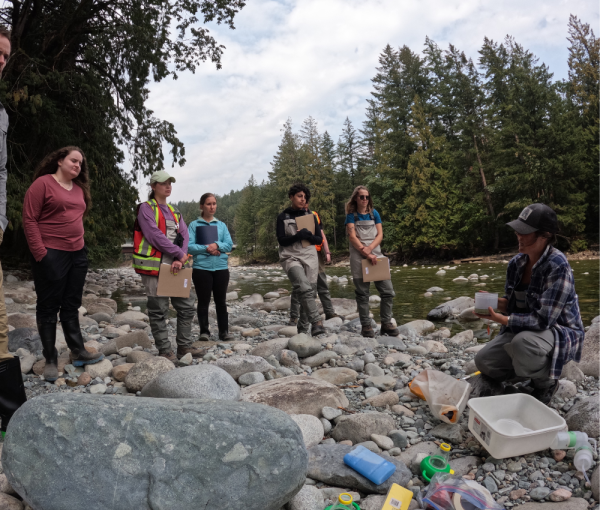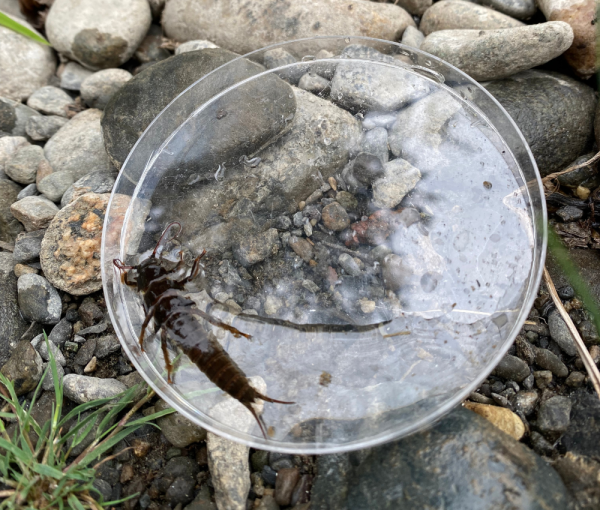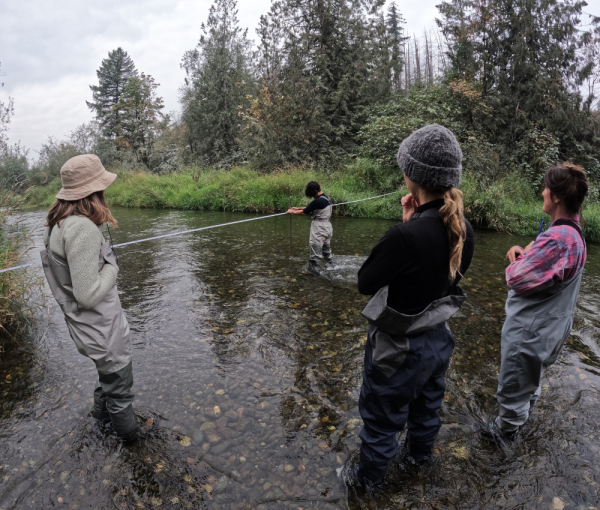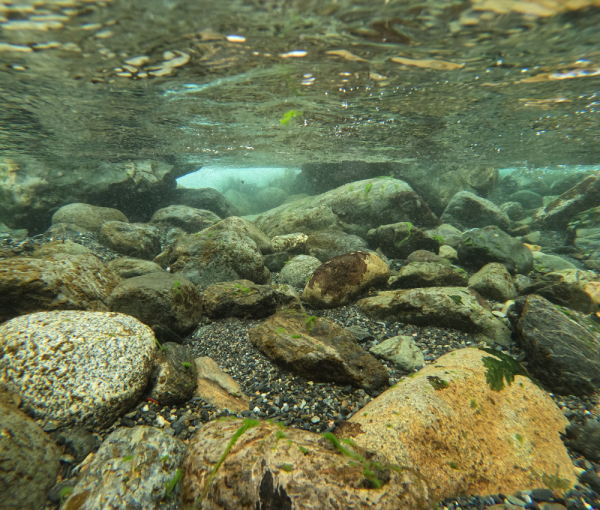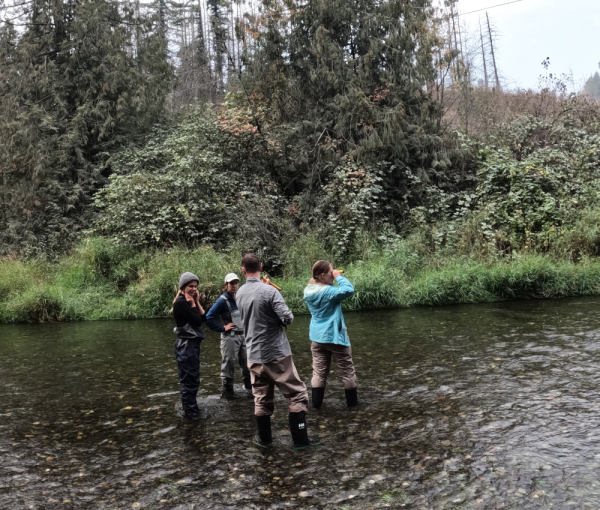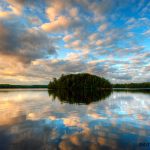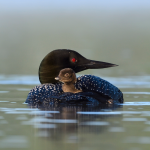Lower Fraser First Nations embrace biomonitoring to protect fish habitat
Indigenous concerns around threats to fish habitat have prompted the S’ólh Téméxw Stewardship Alliance (STSA) and the Lower Fraser Fisheries Alliance (LFFA) to enhance their capacity for aquatic biomonitoring in the Lower Fraser Valley.
The Stó:lō Research and Resource Management Centre (SRRMC) and LFFA work in partnership to utilize biomonitoring to aid First Nations-led freshwater management and restore waterways in the Lower Fraser Valley. Both organizations decided to pursue STREAM (Sequencing The Rivers for Environmental Assessment and Monitoring) biomonitoring training to gain insight into where there may be pressures on water sources within S’ólh Téméxw (Stó:lō territory).
“Stó:lō is looking for impacts on fish habitat, a concern for many STSA members,” said Dr. Julian Yates, Research and Special Projects Manager for the Stó:lō Research and Resource Management Centre. “STREAM gives us an understanding of the quality of habitat to assess stressors on fish in some areas.”

Led by the Hajibabaei lab at the University of Guelph’s Centre for Biodiversity Genomics, STREAM is a community-based Canada-wide project in collaboration with Living Lakes Canada and Environment and Climate Change Canada. The project involves the collection of benthic macroinvertebrates (small aquatic bugs) from rivers across the country to better understand aquatic ecosystem health. By using cutting-edge DNA metabarcoding technology, STREAM obtains faster, more accurate and less expensive monitoring results.
“We want to identify the most heavily impacted rivers and streams and also identify the clues of where the impact may have come from. This will help to prioritize where restoration efforts are made and informs how Nations of the STSA will plan restoration projects for each geographically unique area in which they work,” explained Ian Hamilton, LFFA Habitat Restoration Biologist.
Clear waters, smoky skies, and good company sums up the two days of STREAM training that Living Lakes Canada hosted for SRRMC and LFFA members in Chilliwack, B.C.
Staff from Living Lakes Canada, WWF-Canada and the Hajibabaei lab guided SRRMC and LFFA staff as they collected freshwater benthic macroinvertebrate samples in and around Chilliwack, using the federal Canadian Aquatic Biomonitoring Network (CABIN) protocols adapted for the STREAM project.
“When a kick-net sample has been taken from the water and you look at all the bugs collected, it’s interesting to think about the diversity that’s in and amongst the rocks … you don’t think of all the bugs that could be feeding at the bed of a river,” described Dr. Yates.
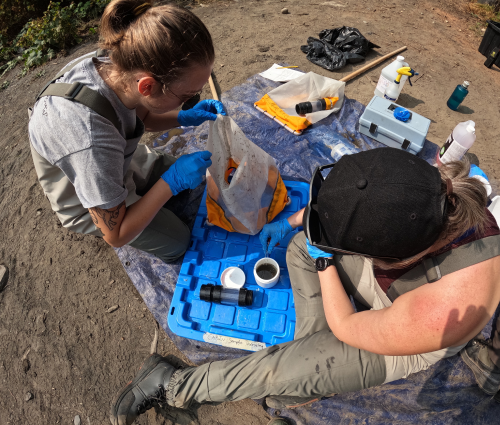
Although they’re small and mostly unnoticeable to the untrained eye, benthic macroinvertebrates play an important role in helping us understand the health of watersheds. These organisms are excellent indicators of aquatic health due to their high sensitivity to pollutants and climate change-related impacts.
All benthic macroinvertebrate samples will be analyzed by the Hajibabaei Lab at the University of Guelph using DNA metabarcoding to extract bulk DNA and use advanced bioinformatics to track the collected macroinvertebrate species.
“Community-based sampling and training are at the heart of STREAM—it’s only with the help of groups like the STSA and LFFA that we’re able to access important monitoring sites,” said Dr. Mehrdad Hajibabaei, Integrative Biology Professor at the University of Guelph’s College of Biological Sciences and STREAM Scientific Leader.
As training was completed and samples were collected, participants became eager to receive and interpret the data.
“STREAM methodologies provide a guide on where STSA should conduct more thorough investigations, but also as an ongoing project, collecting data and creating a data set within S’ólh Téméxw is important,” said Dr. Yates.
All data will be shared with both organizations for their ownership, control, and use according to direction from Stó:lō leadership. It will also be uploaded to the national CABIN database and STREAM database, in line with the protocols for these monitoring approaches.
STREAM acknowledges and extends gratitude to Stó:lō Service Agency Society for supporting STREAM and providing facilities. STREAM acknowledges all collaborating Nations and their territories, including the unceded territory of Sts’ailes First Nation, the unceded territory and reserve land of Soowahlie First Nation, a member of Ts’elxwéyeqw Tribe, and the unceded territory of the Ts’elxwéyeqw Tribe and the Pelólhxw Tribe member First Nations.
Photos & story by Tamanna Kohi, STREAM Field, Outreach and Communications Coordinator, University of Guelph


